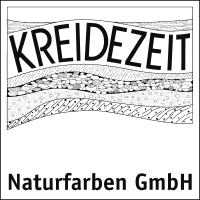Working with pigments is just as easy as working with tinting pastes.
Pigments simply need to be mixed with water to make a paste before adding to paints or plasters. We recommend to use soft water like purified water. This step-by-step guide will help you get started with tinting pigments.
We use pigments because
- they can be used universally
- they have an unlimited shelf life
- they do not contain any preservatives or other additives
- they are alkaline-resistant
- authentic earth pigments have a certain charm
The reason why we use pigments and not colour pastes is that preservatives or additives need to be used to preserve pastes, which conflicts with our company philosophy.
Powder products (powder wall paints and plasters) can either be mixed first without pigment with the specified amount of water and then mixed with the pigment slurry shown below. This is particularly useful if the desired colour intensity is only to be determined on site; re-tinting with pigment slurry is still possible in this way. However, if the amount of pigment is known in advance, the pigments can alternatively first be added to the specified amount of mixing water of the powder product and stirred well, then stir in the powder product.
Important: Soft water wets and dissolves the pigments better. If your tap water has a high lime content, it is better to use rainwater or demineralised or filtered (Brita filter) water.
This example shows a 1:1 mixing ratio B of lime paint as a mixed tone using Spinel Green and Iron Oxide Black.
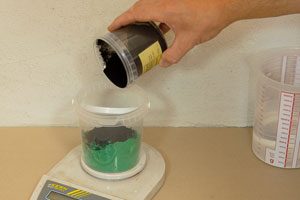 1. Weigh the pigments.
1. Weigh the pigments.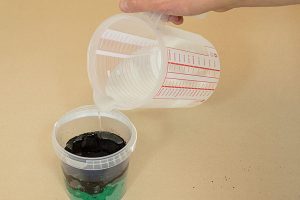 2. Add water – about half of the weight of the pigment (e.g. 500 ml of water to 1 kg of pigment).
2. Add water – about half of the weight of the pigment (e.g. 500 ml of water to 1 kg of pigment).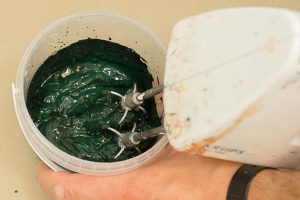 3. Mix the pigments using a hand mixer or a wooden stirrer, until the pigment mixture is smooth and thick.
3. Mix the pigments using a hand mixer or a wooden stirrer, until the pigment mixture is smooth and thick.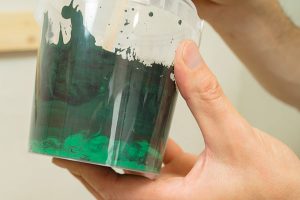 4. Using a wooden stirrer or similar, stir the pigments at the bottom of the container until they form a consistent paste. A wooden stirrer alone can also be used without using a hand mixer.
4. Using a wooden stirrer or similar, stir the pigments at the bottom of the container until they form a consistent paste. A wooden stirrer alone can also be used without using a hand mixer.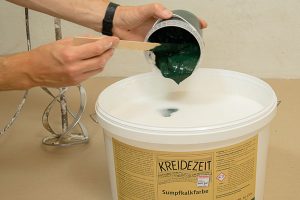 5. Add the pigment mixture to the paint.
5. Add the pigment mixture to the paint.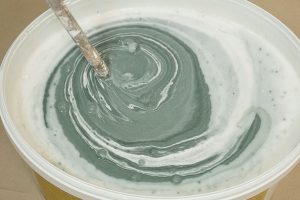 6. Using the stirrer, stir the pigment mixture evenly into the paint.
6. Using the stirrer, stir the pigment mixture evenly into the paint.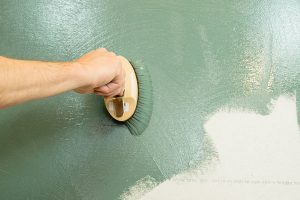 7. Apply the paint and leave to dry.
7. Apply the paint and leave to dry.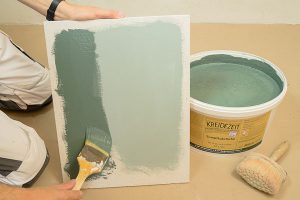 8. Pigments in Kreidezeit Wall Paints and Renders become considerably brighter during the drying process. This is an example of exactly the same paint, freshly applied on the left and fully dried on the right.
8. Pigments in Kreidezeit Wall Paints and Renders become considerably brighter during the drying process. This is an example of exactly the same paint, freshly applied on the left and fully dried on the right.The information described above has been established in accordance with the most recent experience available to us. Due to the processing methods and environmental influences as well as the different types of substrates, a binding obligation for the general legal validity of the individual recommendations must be ruled out. Before use, the product must be checked by the processor for suitability for the intended use (sample coating).
In the case of new editions or product changes, the texts lose their validity.
